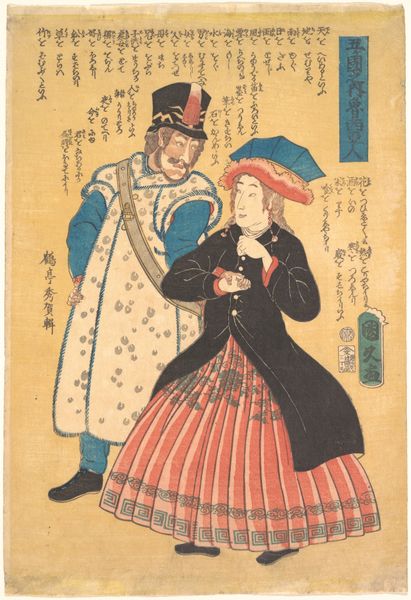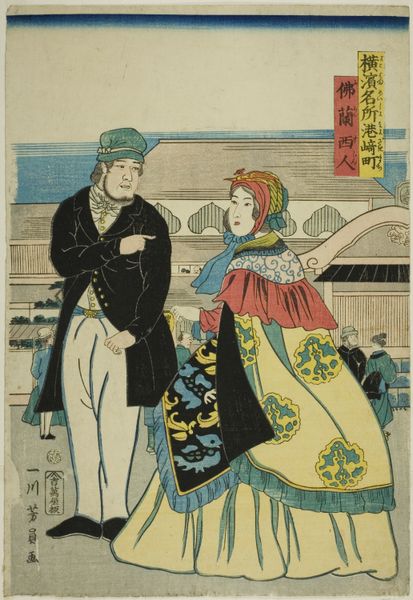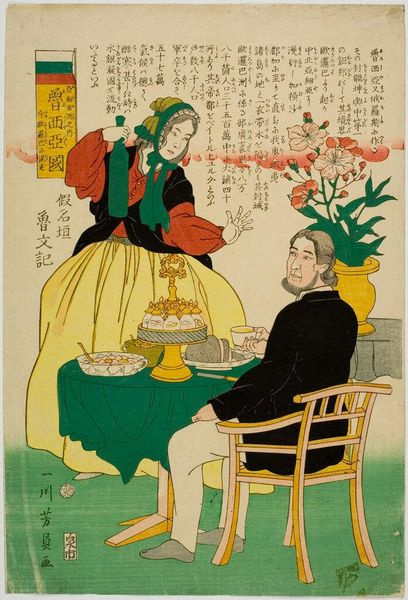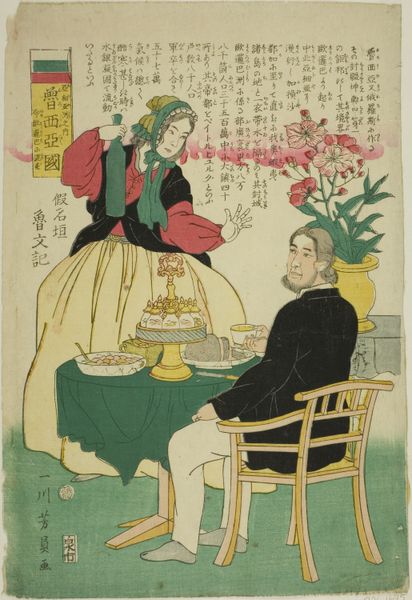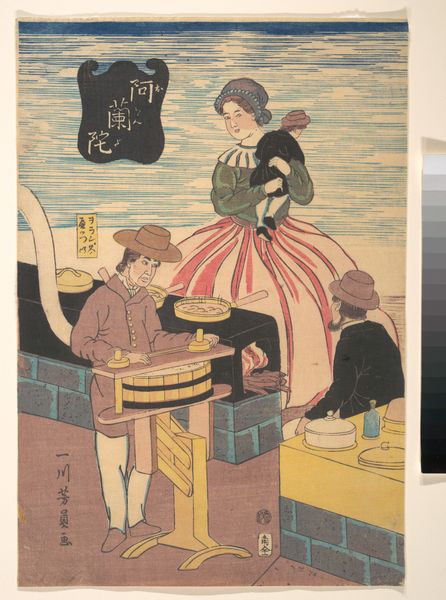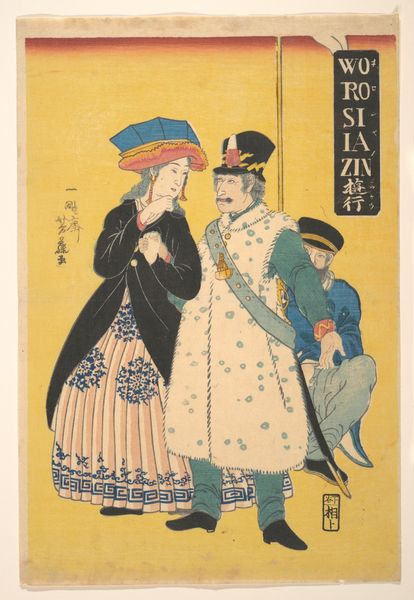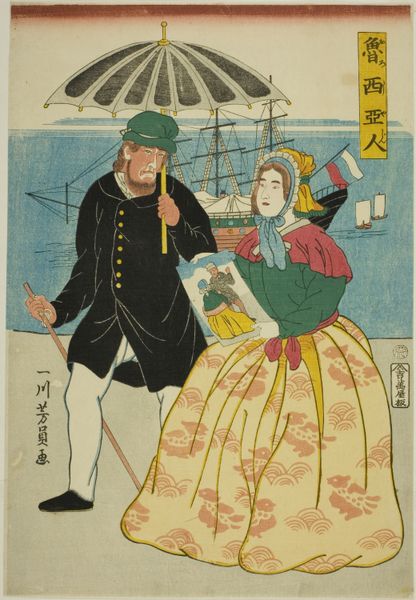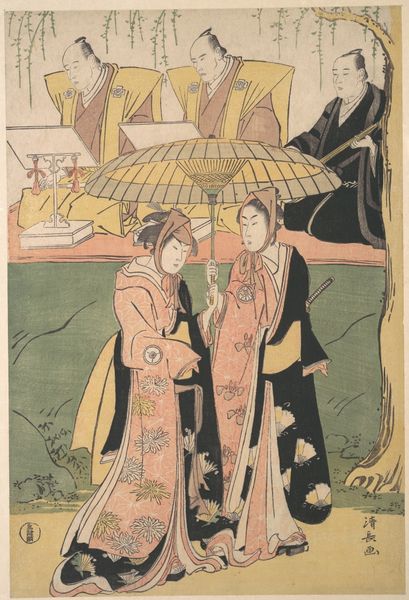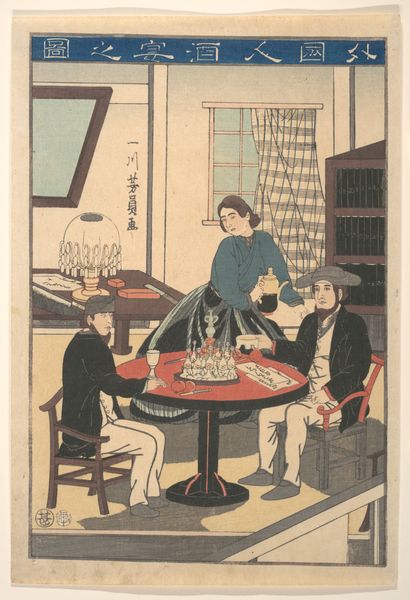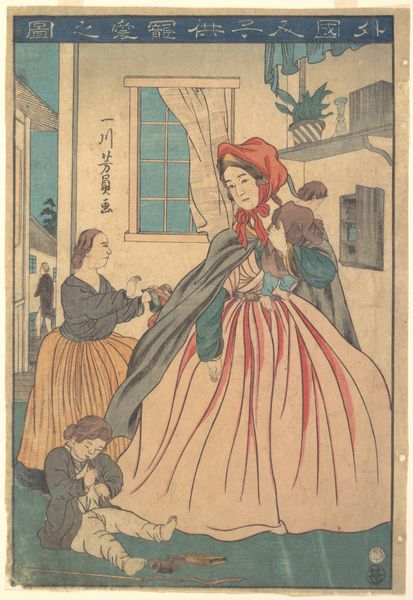
print, woodblock-print
#
portrait
# print
#
asian-art
#
ukiyo-e
#
woodblock-print
#
genre-painting
Copyright: Public Domain
Curator: Utagawa Yoshikazu's woodblock print, titled "French (Furansu)," created around 1861, is a rather curious artifact. It now resides in the collection of The Art Institute of Chicago. Editor: Well, my first impression is how effectively it evokes a certain artificiality. The perspective feels intentionally flattened, and the colors are simultaneously vibrant and somehow muted. It has a striking, decorative quality, doesn’t it? Curator: Indeed. It speaks volumes about the period's fascination with the West, filtered through a distinctly Japanese artistic lens. Observe how the artist renders the figures in what he perceives as "French" style. Editor: Yes, it’s clearly an idealized vision of the West, complete with stereotyped notions of fashion and leisure. I'm especially interested in what the inclusion of western figures and objects communicates about the socio-political climate of Japan at this time. How might contemporary audiences have interpreted the teacups and western clothes? Curator: I'd posit that the work presents us with a compelling case study in cultural exchange. It employs a system of representation which favors linear contours and bold blocks of color— hallmarks of Ukiyo-e tradition. Editor: Precisely! The Western motifs, so prominently featured here, underscore the shift in global power dynamics of the late Edo period. We observe how Western influence seeped into Japanese society and popular imagination. Curator: Beyond this depiction of foreign cultures and peoples, I find the very materiality of the print fascinating. The technique allows for mass production, thus ensuring a wider distribution. This allows these concepts and cultural notions to disseminate across a wide audience. Editor: Absolutely. It becomes a sort of mass mediated construction of otherness, reinforcing existing preconceptions. This print is so valuable for it exposes art's ability to construct identities, both personal and cultural. It asks the modern viewer to consider, who controls that narrative? Curator: Ultimately, what we see here isn't merely an image; it’s a confluence of cultural anxieties and aesthetic ambitions. Editor: I agree completely. A rich example of art as both artifact and social commentary.
Comments
No comments
Be the first to comment and join the conversation on the ultimate creative platform.


